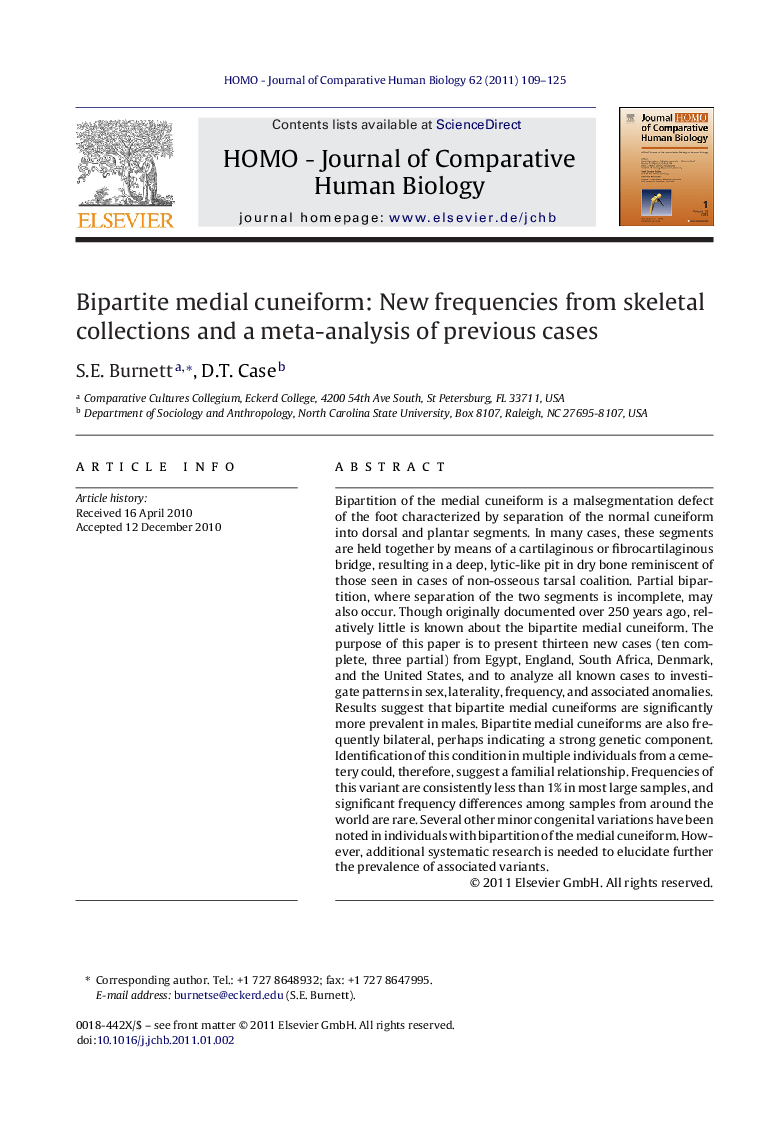| Article ID | Journal | Published Year | Pages | File Type |
|---|---|---|---|---|
| 100439 | HOMO - Journal of Comparative Human Biology | 2011 | 17 Pages |
Bipartition of the medial cuneiform is a malsegmentation defect of the foot characterized by separation of the normal cuneiform into dorsal and plantar segments. In many cases, these segments are held together by means of a cartilaginous or fibrocartilaginous bridge, resulting in a deep, lytic-like pit in dry bone reminiscent of those seen in cases of non-osseous tarsal coalition. Partial bipartition, where separation of the two segments is incomplete, may also occur. Though originally documented over 250 years ago, relatively little is known about the bipartite medial cuneiform. The purpose of this paper is to present thirteen new cases (ten complete, three partial) from Egypt, England, South Africa, Denmark, and the United States, and to analyze all known cases to investigate patterns in sex, laterality, frequency, and associated anomalies. Results suggest that bipartite medial cuneiforms are significantly more prevalent in males. Bipartite medial cuneiforms are also frequently bilateral, perhaps indicating a strong genetic component. Identification of this condition in multiple individuals from a cemetery could, therefore, suggest a familial relationship. Frequencies of this variant are consistently less than 1% in most large samples, and significant frequency differences among samples from around the world are rare. Several other minor congenital variations have been noted in individuals with bipartition of the medial cuneiform. However, additional systematic research is needed to elucidate further the prevalence of associated variants.
